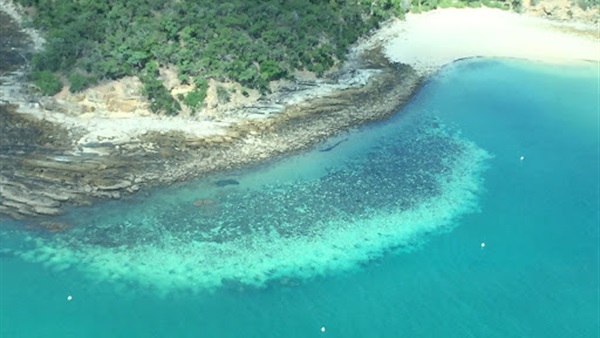Great Barrier Reef’s latest bleaching confirmed by marine park authority

The government agency responsible for the Great
Barrier Reef has confirmed the natural landmark has suffered a third mass coral
bleaching episode in five years, describing the damage as “very widespread”.
The Great Barrier Reef Marine Park Authority said
the assessment was based on information from in-water and aerial observations,
and built on the best available science and technology to understand current
conditions.
Guardian Australia revealed on Wednesday that Prof
Terry Hughes, director of the ARC Centre of Excellence for Coral Reef Studies
at James Cook University, concluded the reef had experienced severe mass
bleaching in the 2019-20 summer based on his findings from a nine-day aerial
survey trip.
By Thursday Hughes had assessed more than 800 reefs,
covering 344,000 sq km, with another 200 sq km at the southern end to go. He
was joined on the trip by an observer from the marine park authority.
In a statement, the authority said the accumulation
of heat, particularly through February, had caused bleaching across large areas
of the reef. The severity of the damage varied widely, but some southern areas
that had been spared during mass bleaching events in 2016 and 2017 had now
experienced moderate or severe bleaching.
It noted there was positive news for the tourism
industry: reefs they rely on in the northern and central parts, including near
Cairns and Port Douglas, experienced only moderate bleaching, and most corals
there should recover. Some pockets of the reef remain unaffected by bleaching.
The authority said it would have a better
understanding of the extent and severity of the bleaching once surveys finished
on Friday, with analysis to continue over coming weeks.
“Once the aerial surveys are complete we will be
able to compare this event to those of 2016 and 2017,” the statement said.
It stressed bleached corals would not necessarily
die. “On mildly or moderately bleached reefs there is a good chance most
bleached corals will recover and survive this event,” it said. “Equally, on
severely bleached reefs, there will be higher mortality of corals.”
Global heating caused by escalating atmospheric
greenhouse gases is a major threat to the world’s coral reef ecosystems. The
UN’s Intergovernmental Panel on Climate Change found the published evidence
suggested a majority of tropical coral reefs would disappear even if heating
was limited to 1.5C and would be “at very high risk” at 1.2C. The globe has
warmed about 1C since the industrial revolution.
About half the reef’s shallow water corals bleached
and died in 2016 and 2017.
The authority reiterated that climate change was the
“single greatest challenge” facing the reef. “While the strongest possible
global efforts to reduce emissions are essential, it is critically important we
continue to deliver the work already being undertaken to enhance the resilience
of the reef,” it said.
Environment groups said the mass bleaching
underlined the need to move away from fossil fuels.
Australian Marine Conservation Society campaigner
Shani Tager said the news was devastating for the reef, the species it supports
and the communities that rely on its health. She said reef industries reeling
from the impact of coronavirus needed short- and long-term support.
“When the restrictions from this pandemic lift we
will need the beautiful places in this world like our reef more than ever to
heal, reconnect with each other and the natural world,” she said. “That means
we need a healthy reef and climate policies that will give it a fighting
chance.”
Kate Smolski, from Greenpeace Australia, said future
economic stimulus packages must include measures to cut greenhouse gas
emissions. Gavan McFadzean, from the Australian Conservation Foundation, said:
“With help, the tourism industry can recover after Covid-19, but only if there
is a healthy Great Barrier Reef to visit once this crisis is over.”
Specific observations from the aerial surveys
include:
Inshore and offshore reefs between Tully and
Townsville were severely bleached.
Offshore areas in the northern section, including
highly valued tourism reefs, were more moderately bleached.
Inner and mid-shelf reefs between Townsville and
Mackay were mostly severely bleached, though some areas used by the tourism
industry were only moderately bleached.
Bleaching of reefs in the Swains and Pompey groups,
at the marine park’s far southeast, was highly variable, with some severe, some
moderate and some with minor or no damage.





